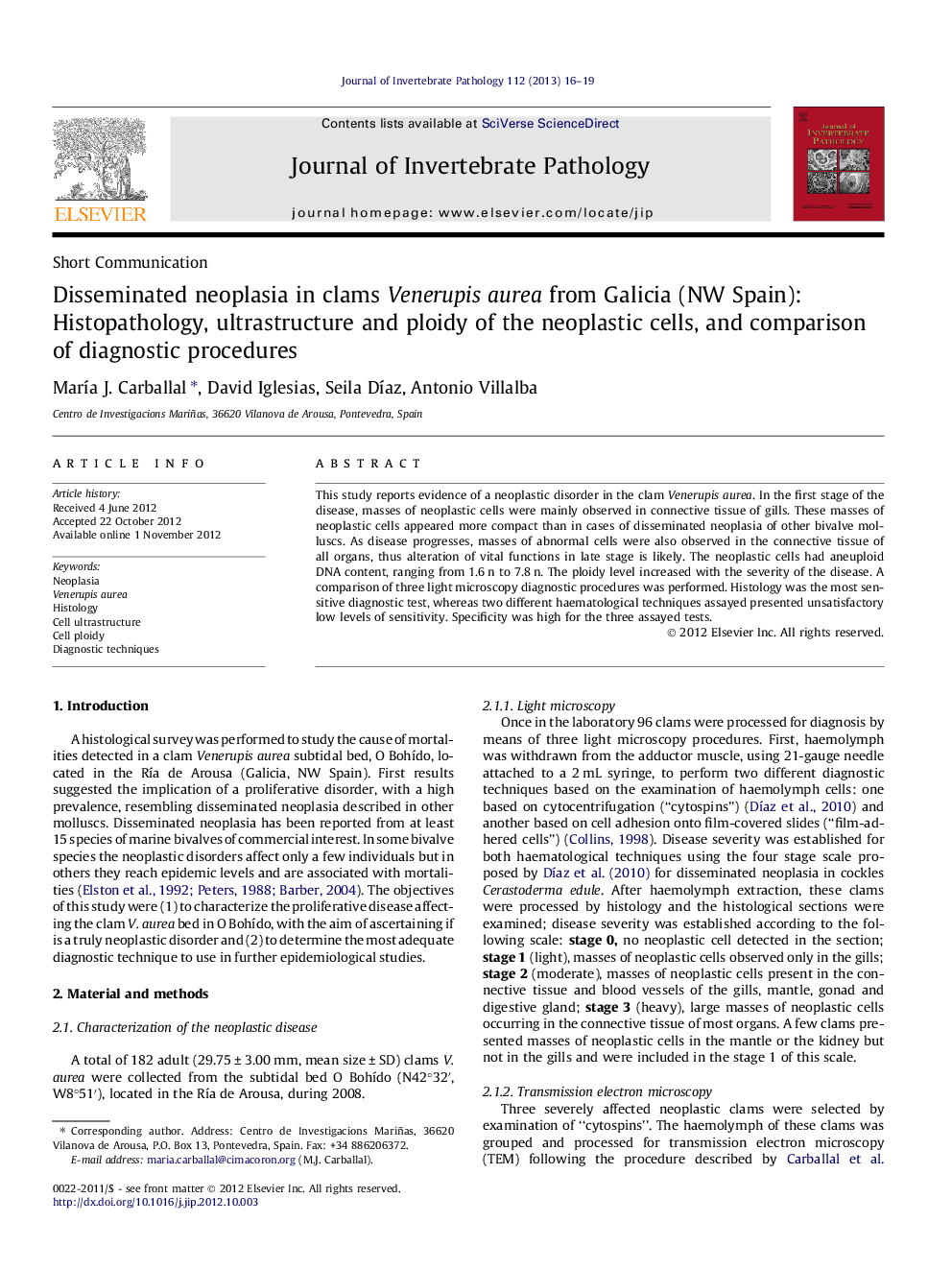| Article ID | Journal | Published Year | Pages | File Type |
|---|---|---|---|---|
| 6389715 | Journal of Invertebrate Pathology | 2013 | 4 Pages |
This study reports evidence of a neoplastic disorder in the clam Venerupis aurea. In the first stage of the disease, masses of neoplastic cells were mainly observed in connective tissue of gills. These masses of neoplastic cells appeared more compact than in cases of disseminated neoplasia of other bivalve molluscs. As disease progresses, masses of abnormal cells were also observed in the connective tissue of all organs, thus alteration of vital functions in late stage is likely. The neoplastic cells had aneuploid DNA content, ranging from 1.6Â n to 7.8Â n. The ploidy level increased with the severity of the disease. A comparison of three light microscopy diagnostic procedures was performed. Histology was the most sensitive diagnostic test, whereas two different haematological techniques assayed presented unsatisfactory low levels of sensitivity. Specificity was high for the three assayed tests.
Graphical abstractHistological sections of a clam Venerupis aurea showing neoplastic cells. (A) Section through the gills showing a gill lamella (double arrow) with large masses of neoplastic cells in the connective tissue and another gill lamellae (arrow) much less affected by the neoplastic disorder. (B) Section through the gills showing an area of connective tissue with a dense mass of neoplastic cells (double arrow) and another area without neoplastic cells (arrow). (C) Enlargement of a mass of neoplastic cells showing pleomorphic nuclei, some of them with patent nucleolus; a mitotic figure (double arrow) is visible. (D) Section through the digestive gland showing the connective tissue infiltrated by neoplastic cells (arrows); some mitotic figures (double arrows) and normal connective cells (arrowheads) are visible. (E) Ultrathin section of a neoplastic cell. m: mitochondria; N: nucleus; nuc: nucleolus.Download full-size imageHighlights⺠The study describes a neoplastic disorder in clams Venerupis aurea. ⺠The neoplastic cells had an aneuploid DNA content which varied between 1.6 n and 7.8 n. ⺠The ploidy level increased with the severity of the disseminated neoplasia. ⺠Histology was a more sensitive diagnostic test than haemocytological tests. ⺠Specificity was high for the histology and the two haemocytological techniques.
